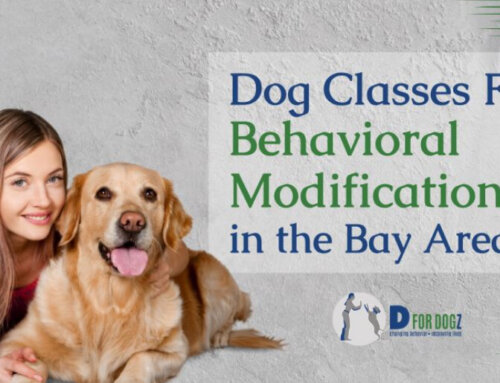Essential Puppy Socialization Skills for a Happy, Confident Pet
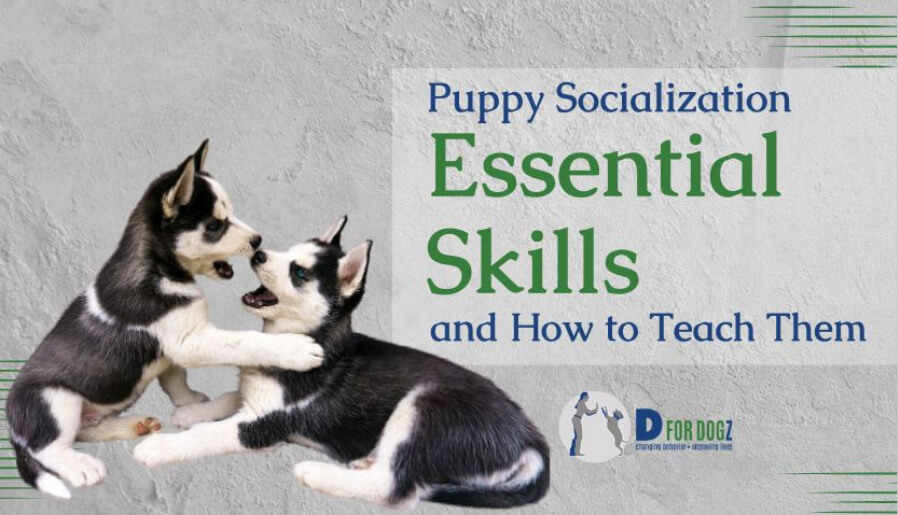
The path to raising a well-socialized puppy is often fraught with misconceptions and missed opportunities. Dog owners frequently grapple with the dual challenge of protecting their vulnerable puppies from potential health risks while ensuring they receive the critical social exposure needed during their formative weeks.
Questions abound: How can one safely socialize a puppy before completing their vaccinations? What are the signs of overstimulation versus healthy curiosity? How does one ensure that their puppy’s first encounters with the world build resilience rather than fear?
Our blog offers practical strategies to overcome these common hurdles. By fostering early, positive experiences, this guide illuminates the path toward raising a confident, friendly dog and alleviating the anxieties of the socialization process.
Key Takeaways
- Tailoring socialization efforts to specific stages of puppy development is essential for fostering confidence and reducing fear.
- Early exposure to various sounds, textures, and handling prepares puppies for future experiences.
- Positive interactions with different people and animals are crucial for developing social skills and preventing aggression.
- Continuous training and setting boundaries throughout socialization help prevent behavioral problems and strengthen the owner-puppy bond.
What are the Essential Puppy Socialization Skills?

Image Source: Freepik
Puppy socialization encompasses various skills and experiences essential for developing a well-adjusted, confident, and friendly adult dog. Here are some key areas and skills that need to be developed during puppy socialization:
1. Exposure to Diverse Environments and Stimuli
One of the foundational elements of a robust puppy socialization program is exposure to various environments and stimuli. This multifaceted approach includes introducing your puppy to various sounds and textures, each serving to build their confidence and reduce fearfulness in everyday situations.
Sounds: A Symphony of Experiences
The world is full of sounds, from the mundane to the extraordinary. Each noise presents an opportunity for a puppy to learn that not every loud bang or beep is a threat. Start by introducing your puppy to common household sounds in a controlled manner. This can include the ringing of a doorbell, the beep of a microwave, or the sound of a vacuum cleaner.
However, their education shouldn’t stop at the edge of your living room. Extend their auditory experiences to include outdoor sounds such as car horns, sirens, and even the hustle and bustle of pedestrian traffic.
For sounds that can’t be naturally introduced in a safe environment, such as fireworks or thunderstorms, consider using soundtracks or apps designed for puppy training that simulate these noises.
The key is to pair these experiences with positive reinforcement. A treat, a cuddle, or a playful game can help your puppy form a positive association with these sounds, teaching them that there’s no need to fear.
Textures and Surfaces: A World Beneath Their Paws
The variety of textures and surfaces your puppy encounters is as important as sound exposure. Each type of ground they walk on — carpet, tile, grass, or wood — helps them adjust to different sensations underfoot, making them more adaptable and less likely to exhibit fear or discomfort on unfamiliar terrain.
You can start this process in your home, allowing your puppy to explore rooms with different flooring. Outdoor excursions to parks, urban areas, and sandy beaches further enrich this aspect of their socialization. Encourage them to walk on various surfaces by leading them with treats and positive encouragement.
Remember, these exercises aim not to overwhelm your puppy but to gently introduce it to the wide array of sensory experiences it will encounter throughout its life. By creating structured, positive exposure to different sounds and surfaces, you’re not just training your puppy but giving it the tools to navigate the world with confidence and curiosity.
2. Interactions with Different People and Animals
Socializing your puppy with a diverse range of people and animals is pivotal in cultivating a well-adjusted adult dog. This section of the socialization process ensures your puppy becomes sociable, confident, and less likely to exhibit fear or aggression toward unfamiliar faces or fellow animals.
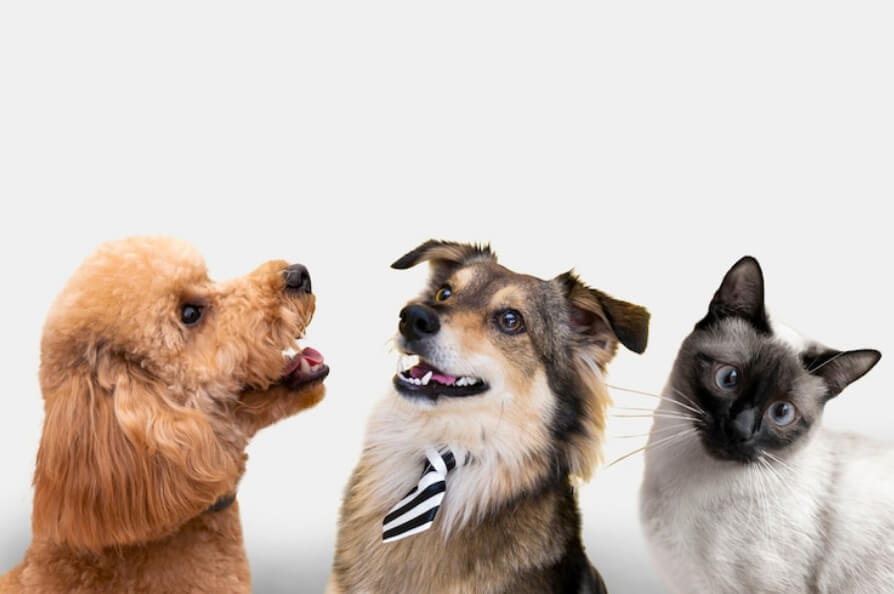
Image Source: Freepik
People: Cultivating Comfort and Confidence
The goal is to help your puppy become comfortable and positive around people of all kinds. This includes children, who often have unpredictable movements and loud voices; people in uniforms, such as mail carriers or police officers, whose attire might initially seem intimidating; individuals using mobility aids like wheelchairs and canes, which can appear unusual to puppies; and people of varying appearances and sizes, which help broaden your puppy’s understanding of the human form.
Initiate these interactions in controlled environments where the puppy feels safe. Please invite friends and family and ask them to interact gently with your puppy, offering treats or toys to create positive associations. Public places like parks can also be good environments for this, provided you keep a close watch to ensure positive interactions. Remember, the quality of these interactions is more important than quantity. Each positive encounter builds your puppy’s confidence and reduces future fearfulness and aggression towards strangers.
Other Dogs and Animals: Learning the Language of Companionship
Interacting with other vaccinated dogs and various animals is critical for teaching your puppy appropriate social behaviors and communication. These interactions allow puppies to learn cues and signals vital for healthy social interactions, helping prevent misunderstandings and conflicts.
Start with short playdates with dogs known to be friendly and patient with puppies.
Puppy classes can also offer a safe and structured environment for these interactions, ensuring all dogs are vaccinated and professionals supervise the play. Exposure to other animals should be done cautiously and only in safe, controlled situations to ensure both the puppy’s and the other animal’s welfare.
3. Handling and Grooming: Building Trust Through Touch
Acclimating your puppy to being handled is crucial for their comfort and cooperation during grooming sessions and veterinary exams. Start by gently touching your puppy in areas that will be handled in these contexts, such as their paws, ears, and mouth. Pair these touches with positive reinforcement like treats or praise to build trust and reduce resistance.
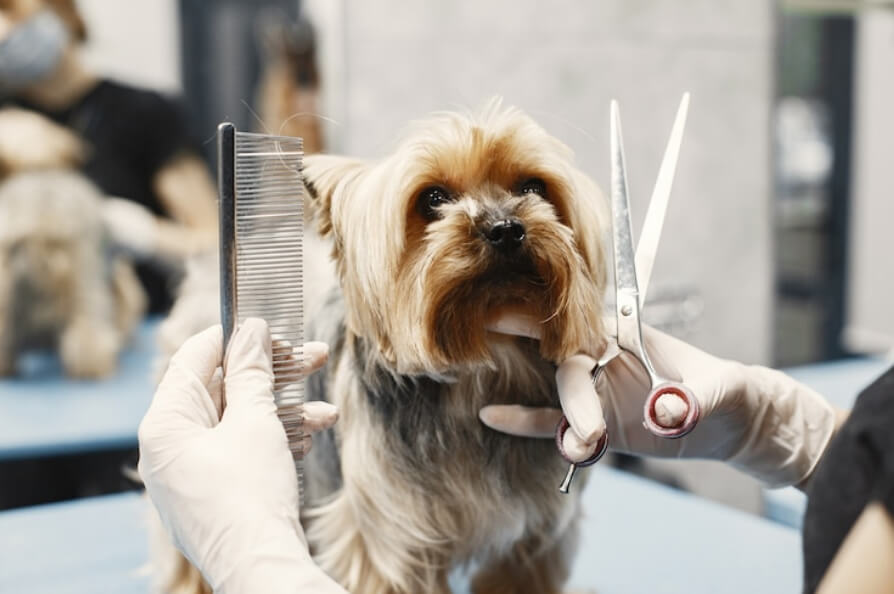
Image Source: Freepik
Gradually introduce your puppy to grooming tools and processes, such as brushes, nail clippers, and baths. Make each experience as positive as possible, using treats and praise to create positive associations. Remember, patience, gentleness, and gradual exposure are key. Rushing this process or forcing your puppy to endure uncomfortable handling can lead to fear and resistance that may last a lifetime.
4. Behavioral Training and Habituation
Teaching your puppy basic commands and behaviors during their socialization period is more than just obedience—it’s about setting the groundwork for a lifetime of mutual understanding and respect. Effective training in these early stages involves encouraging exploratory and playful behaviors while also introducing boundaries. This balance ensures your puppy learns expected behaviors and feels confident and secure in their environment.
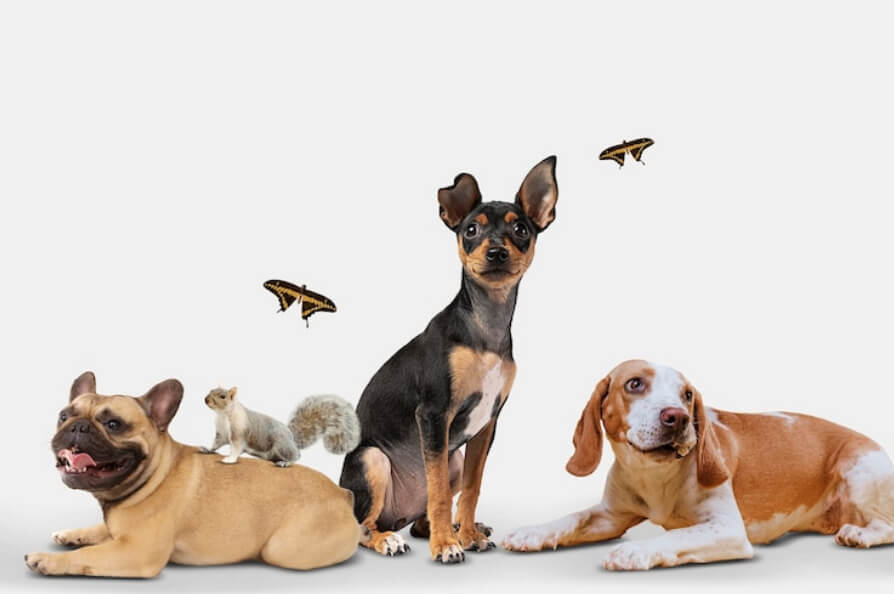
Image Source: Freepik
Start with simple, foundational commands such as “sit,” “stay,” “come,” and “down.” These commands teach your puppy basic obedience and help foster a deeper bond between you and your pet. Use positive reinforcement techniques, rewarding desired behaviors with treats, praise, or playtime. This approach makes learning more enjoyable for your puppy and establishes a positive association with following commands.
It’s equally important to introduce boundaries during play and exploration gently. Redirect your puppy’s attention to a toy or stop playtime momentarily to teach them that biting hands during play is unacceptable. This teaches them to associate gentle play with continued fun and rough play with a pause in their favorite activities.
5. Positive Experiences and Fear Prevention
Creating positive associations with new experiences is crucial in developing a fearless and well-adjusted dog. Every new sound, sight, and situation your puppy encounters is an opportunity to build confidence and prevent future fear or aggression.
When introducing your puppy to something new, pair the experience with positive outcomes. If your puppy shows curiosity towards a new object, reward their bravery with treats or praise. If they react nervously to a new sound, offer comfort and a calm presence, reinforcing that there’s nothing to fear.
This method extends to social experiences as well. Meeting new people or dogs should always be a controlled and positive experience. Allow your puppy to approach new friends individually, and reward them for calm and curious behavior. This not only reinforces good social habits but also helps prevent the development of fear-based aggression or anxiety.
Stages of Puppy Socialization
Here’s a table summarizing the skills needed for puppies concerning their socialization stages.
| Stage | Skills and Focus |
| Curiosity Period (5-7 weeks) | Exposure to gentle handling, different textures, and calm household sounds. Encourage exploration. |
| Behavioral Refinement (7-9 weeks) | Begin basic command training (sit, stay). Introduce boundaries in play. Increase variety of sounds and surfaces. |
| Fear Imprint (8-11 weeks) | Support positive experiences with new people and animals to prevent fear responses. Continue command training. |
| Environmental Awareness (9-12 weeks) | Intensify exposure to outdoor environments, different animals, and diverse groups of people. Reinforce positive behaviors. |
| Seniority Classification (13-16 weeks) | Strengthen obedience training. Address and correct any emerging dominance issues. Foster independence while maintaining boundaries. |
Conclusion
Understanding and applying the principles of puppy socialization across its various stages is crucial for raising a well-adjusted, confident, and sociable dog. This tailored approach ensures that each puppy learns how to interact with the world around them and develops into a secure and happy companion, ready for life’s myriad experiences. Dog owners can effectively mitigate future behavioral issues by focusing on the developmental needs at each stage, fostering a strong, positive bond between them and their pets.
Are you looking to transform your puppy’s behavior and enhance your bond? Explore our Puppy Socials in the Bay Area at D For Dog, where personalized training and positive reinforcement lead to remarkable success stories. Reach out to us today!
About the Author: Kaajal Tiwary
Kaajal (aka “KT”!) loves puppies and is dedicated to getting new puppy guardians off on the right paw and guiding her students through the tough early days of owning a dog. Her goal? Transforming each bundle of raw puppy energy into the perfect adult companion.

